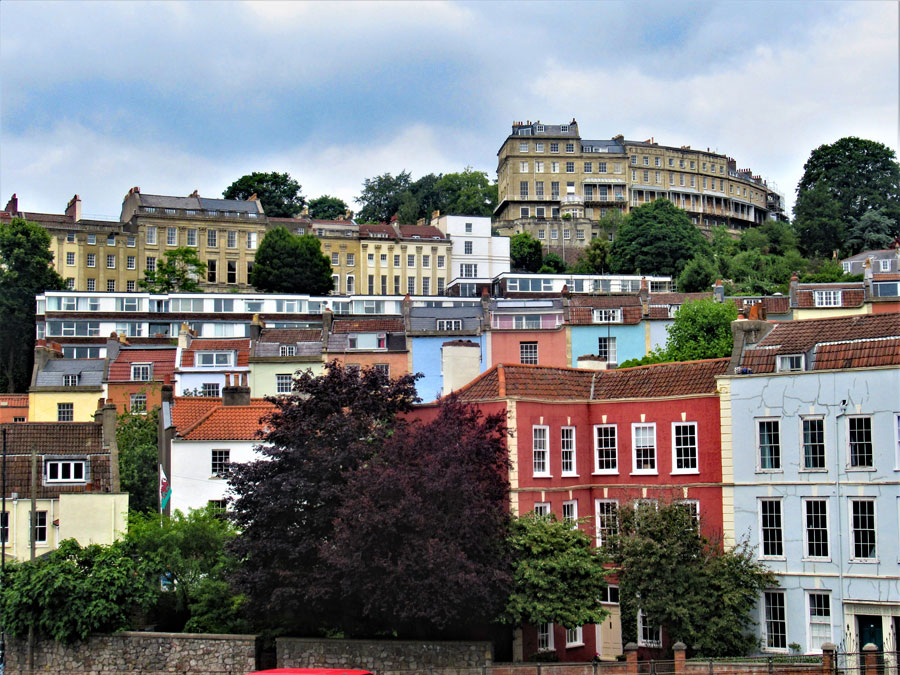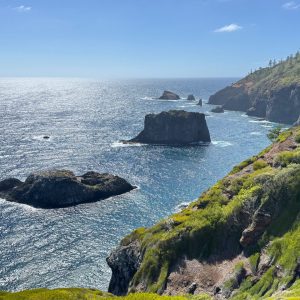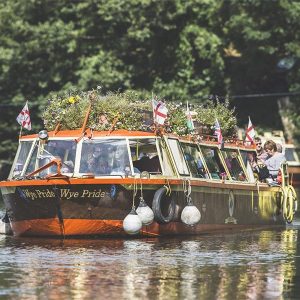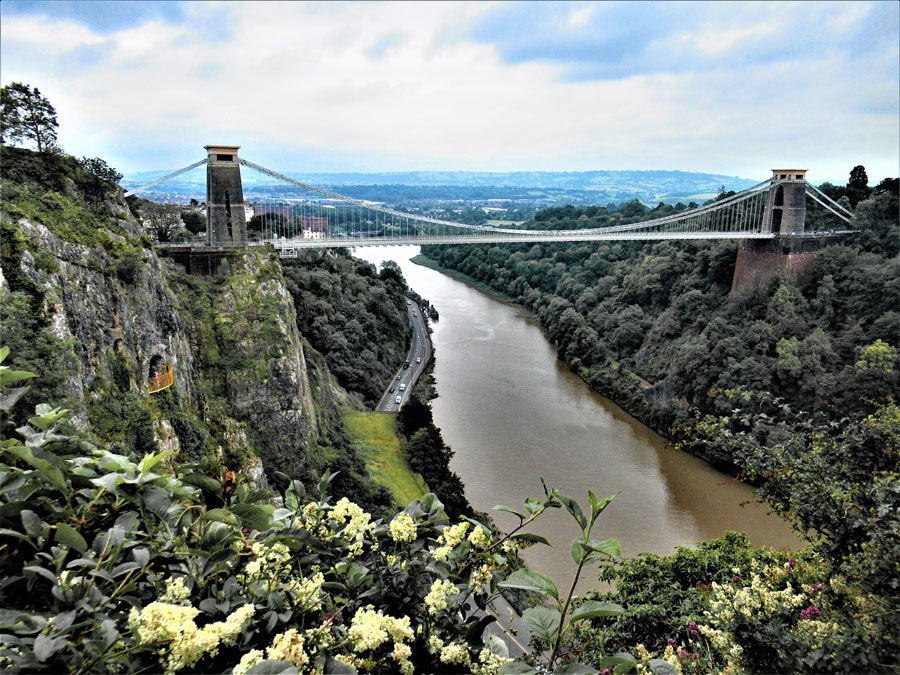
My knowledge of Bristol was limited: I thought BBCs Casualty was filmed there, I knew there was a bridge over a river, and I’d just finished a book which mentioned a Victorian shopping arcade in Clifton, which I gathered was the city’s most expensive area.
So, having won a two-night stay at any Harbour Hotel, Bristol seemed the obvious choice, with a bonus of being only 90-minutes by train from London. We chose to travel on 21 June, hoping that lockdown would have ended, but as we all know, that didn’t happen, so our trip was impacted both in positive and less positive ways.
Our hotel
The boutique Bristol Harbour Hotel and Spa ticked all our boxes: small (42 rooms), central location for sightseeing, eating and drinking, and a 15-minute walk from the train station. In addition, it was very near the Bristol branch of my favourite bookshop, Stanfords. Unfortunately, due to Covid, the Gold Bar was only open at weekends, and both breakfast and use of the spa had to be pre-booked.
Eating and drinking
Bristol has a plethora of restaurants and bars, but the nearby Cosy Club with its grand interior and superb service was a real highlight. We enjoyed drinks and snacks in The Old Fish Market and tasted local cider on the informal terrace of The Apple. Wherever we went, we never struggled to find somewhere appropriate.
Planning
Covid meant we needed to do a little forward planning. We booked the interestingly named M Shed, for an overview of Bristol, and its temporary Vanguard Exhibition to learn about the city’s street art and mysterious Banksy. The controversial Colston Statue was also on display until a decision is reach on its future. We enjoyed our morning browsing the uncrowded exhibits, and if our feet had been more accommodating, it would have been easy to spend more than a couple of hours there.
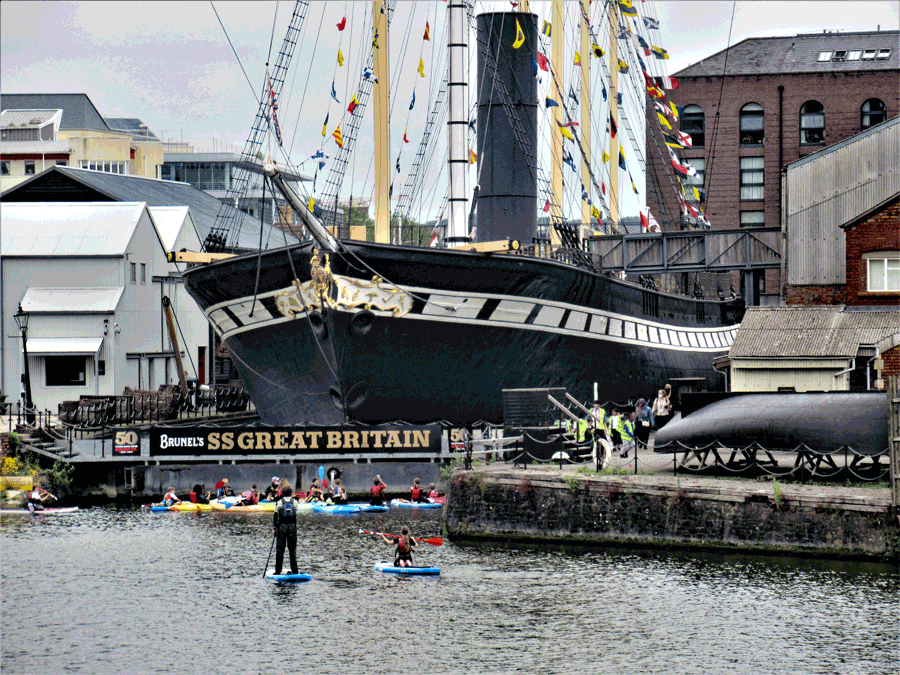
For some reason, neither of us were particularly keen to prebook Bristol’s number one tourist attraction, the SS Great Britain.
But having glimpsed the ship, and seen the nearby information boards, with their brief overview of the former passenger steamship, it sounded fascinating. Designed by Isambard Kingdom Brunel, she was the longest ship in the world from 1845 to 1854, providing a transatlantic service between Bristol and New York City. Ending up in the Falklands, she’d been re-floated with mattresses stuffing holes in the hull, before returning to Bristol on a pontoon pulled by the tug Varius II. The journey took 49 days and there was a great photo of the guys on the tug, who had created a ‘swimming pool’ on board.
Sightseeing
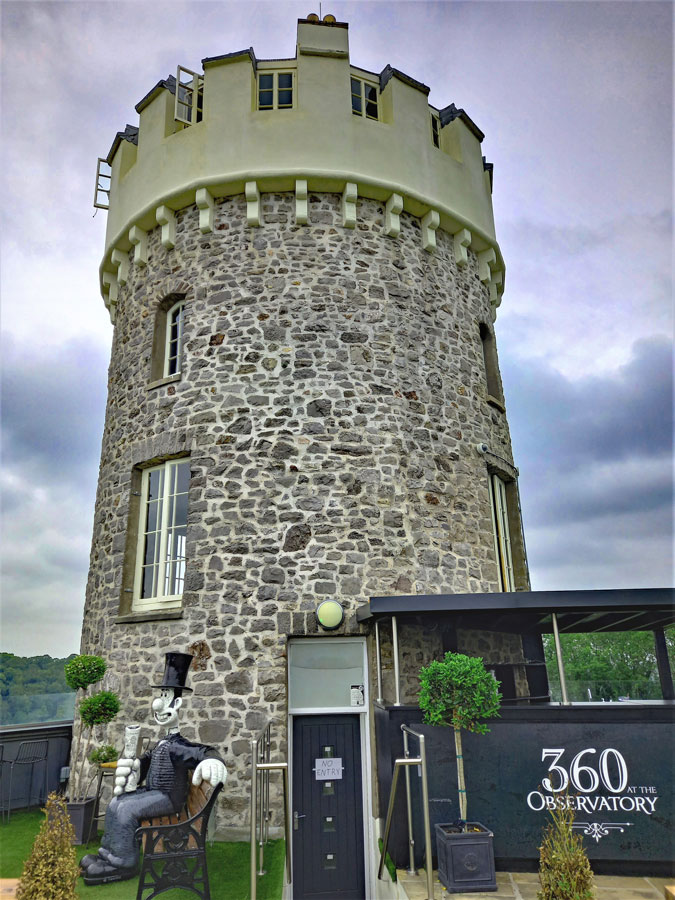
Having read so much about Clifton it was a must, but be warned, if you’re walking there from the city, it’s uphill all the way. On route we detoured off to Brandon Hill and Cabot Tower [temporarily closed], past the exclusive Lido where a helpful lady said we could have poolside coffee, and the modern Clifton Cathedral.
We eventually found our way to the green space with Clifton Observatory, and although the Giants Cave and Camera Obscura were open, we climbed a relatively few steps for a free view.
Having walked across the Clifton suspension bridge, with the Samaritan’s telephone number prominently displayed at either end, we found the Visitors’ Center only opens at weekends for prebooked appointments.
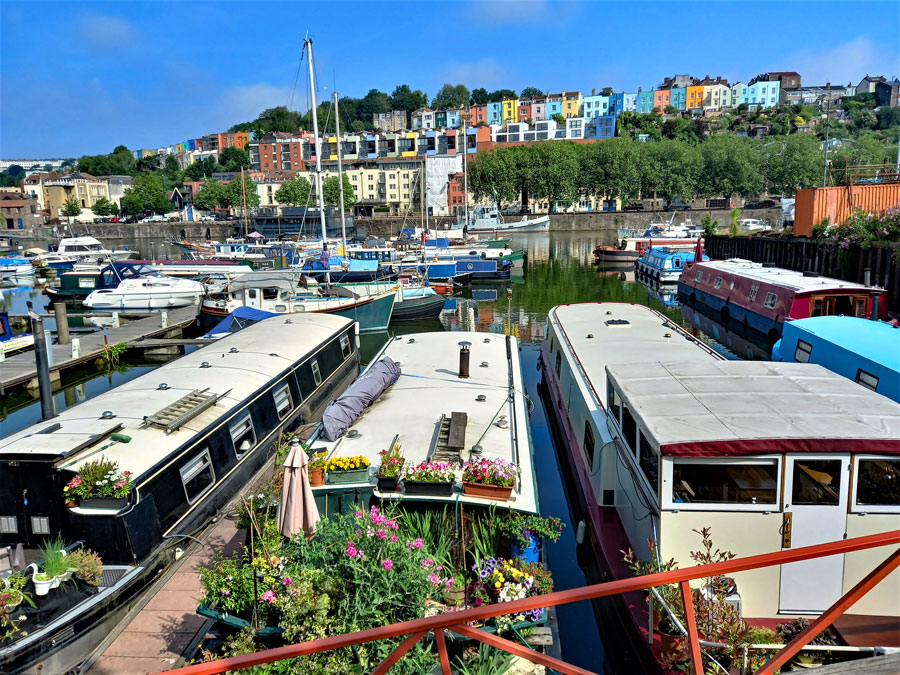
Afterwards we strolled around Clifton Village, mooched the independent shops in the Victorian Clifton Arcade, and then walked down Royal York Crescent, reputed to be the longest crescent in Europe, with a raised pavement underneath vaulted cellars.
In nearby Cliftonwood, we saw the brightly coloured houses, easily visible from various vantage points around the city.
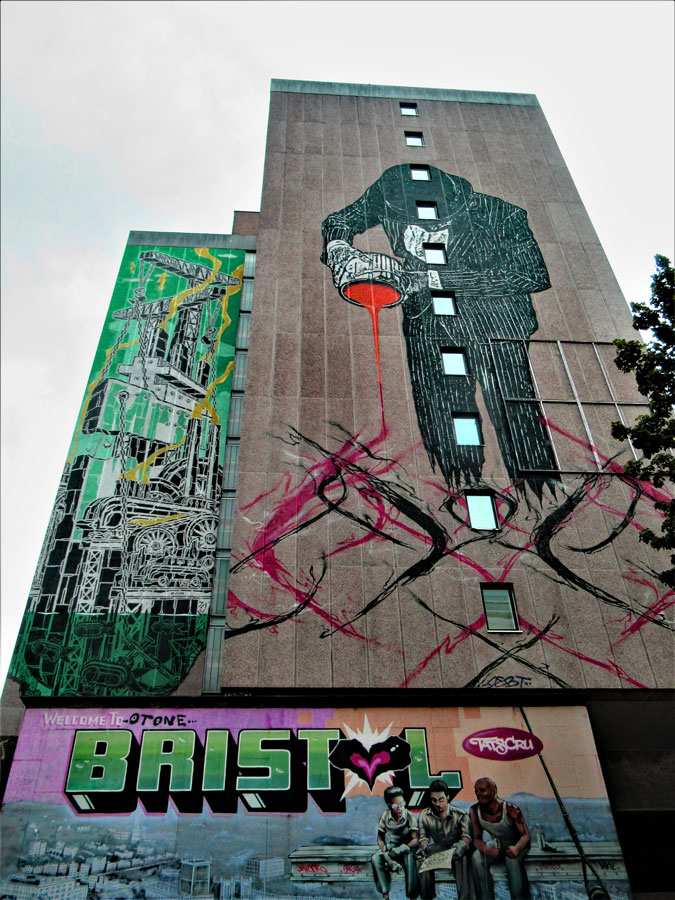
Inspired by the Vanguard exhibition, we wanted to check out the street art and headed to Stokes Croft. Our Lonely Planet suggested two items which could help: a Banksy info sheet or the Where’s the Wall colourful Bristol Street Art Map. Whilst these should have been available from Tourist Information, they were closed due to Covid.
We could have downloaded a self-guided Banksy Bristol Trail App but neither of us are great fans of mobile phone maps, so we decided to just wander. It was quite a long trek, but we found lots to photograph.
Directly opposite our hotel was St Nicholas Indoor Market, housed in a Georgian Corn Exchange, and divided into three sections: Exchange Hall, Glass Market and Covered Market. Here we browsed the eclectic and quirky range of stalls ranging from all things chilli to hats, jewellery and colourful clothing. Next to it, was the Street Food Market, ideal for a quick, on the hoof bite.
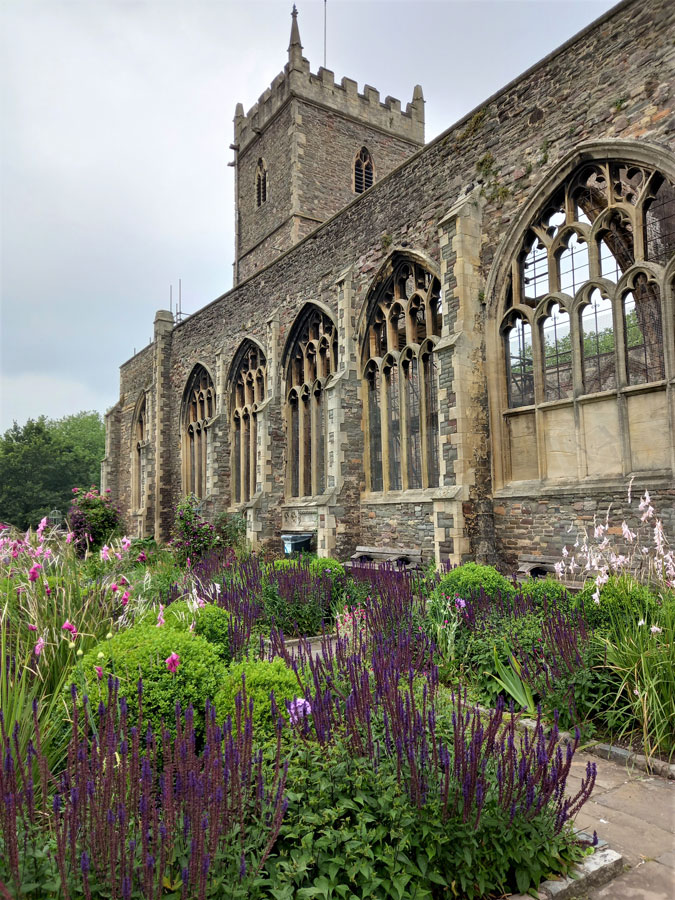
There was little left of the former Medieval Castle in nearby Castle Park, although it was a pleasant green space on the edge of the river.
However, we came across the derelict St Peter’s church, bombed during World War II, with its stunning and colourful Physic Garden, maintained by the homeless charity, St Mungo’s and supported by the fragrance company, Jo Malone.
We visited Bristol Cathedral for Choral Evensong, one of three daily services, and the following day for a more in-depth visit, where refreshingly the entrance was free.
As the weather was good, we simply enjoyed walking the banks of the City Dock and Floating Harbour taking in the sights from all different angles.
Although we had three full days in the city, there were still other attractions we didn’t manage to fit in, like the Bristol Museum and Art Gallery and a visit to the Bristol Old Vic. Unfortunately due to Covid, the 45-minute Harbour tours were only just beginning and the waterbus was not operating. Whilst the city is walkable, there is an open-top, hop on-hop off Tootbus. However, for those taking to the streets, beware of cobbles and e-scooters which are being trialled in the city and which zip around at frightening speeds.
Bristol is probably often overlooked in favour of its more famous neighbour, Bath, but we thoroughly enjoyed our break. And in case you’re interested, there was no sign of Charlie Fairhead, as the filming of Casualty moved from Bristol to Cardiff in 2011.
